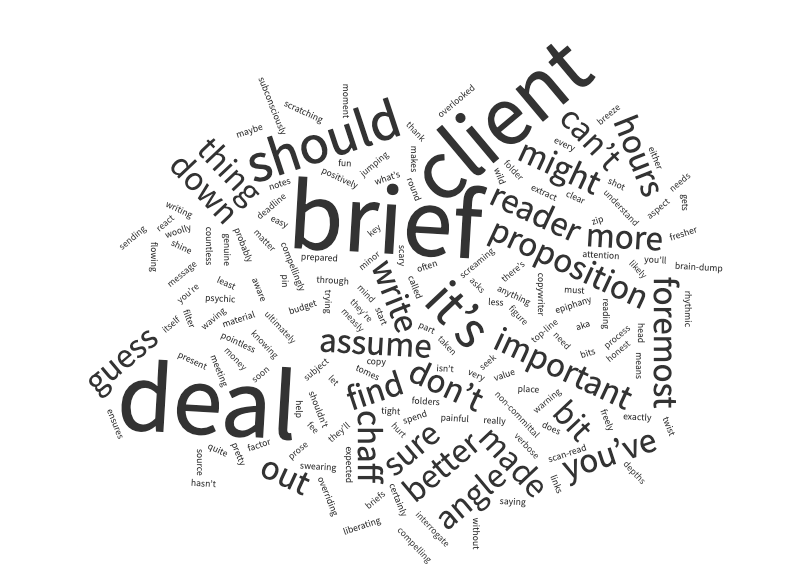For the most part, writing good copy is easy (for a copywriter). If you’ve taken the time to understand the subject matter, and which bits are important to your reader, it should be a breeze. It certainly shouldn’t be painful.
If it does hurt a bit, you might need to go back to the brief.
The brief is key.
More often than not, there’s a minor aspect you’ve overlooked (or not been made aware of in the first place) that will give you the epiphany to write freely and compellingly.
It’s called the proposition. AKA ‘the deal’.
Every brief must have one.
It’s the first and foremost thing any reader will subconsciously be screaming for as soon as they start reading anything that asks for their attention. They will scan-read and filter out the chaff. And the more chaff they have to process to get to ‘the deal’, the less likely they are to react positively.
So, with that in mind, it should be the first and foremost thing you seek in your brief – and if the brief is any good, it should be jumping up and down and waving at you. If your client hasn’t made this clear (or you can’t extract if from them), tomes of source material and meeting notes are pretty pointless. At very least, you’ll spend hours trying to figure it out, and probably be woolly, verbose and non-committal when you write!
A comprehensive brief is concise.
Briefs that come with countless folders and links are scary. And, to be honest, they’re a warning shot that your client isn’t quite sure what the deal is, either. They’ll assume you’re psychic, or are prepared to make a wild guess after hours of head scratching and swearing.
Don’t let them do that.
They know better than you do what the top-line message is, and it’s important to work back from it to find the ‘angle’ that makes ‘the deal’ shine through – not guess your way up to it on a tight deadline and a measly budget.
You might find a better or fresher angle on what that is, but you can’t really be expected to know from a brain-dump.
By all means help your client to pin that down, or to ‘interrogate’ what the overriding proposition is, but don’t assume it will present itself from the depths of a .zip folder. And make sure you factor that into your time, and your fee. Ultimately, your client will thank you. Maybe.
Knowing exactly ‘what the deal is’ is a liberating moment. Now you know what needs saying, you can say it in flowing, rhythmic and compelling prose.
This is the ‘fun’ bit, and ensures your client gets genuine value for their money without sending you round the twist.




